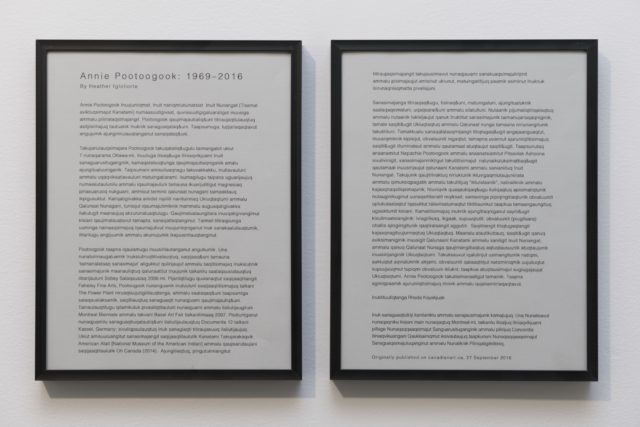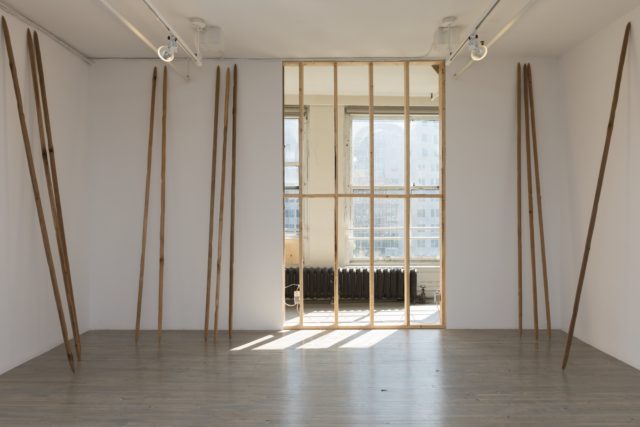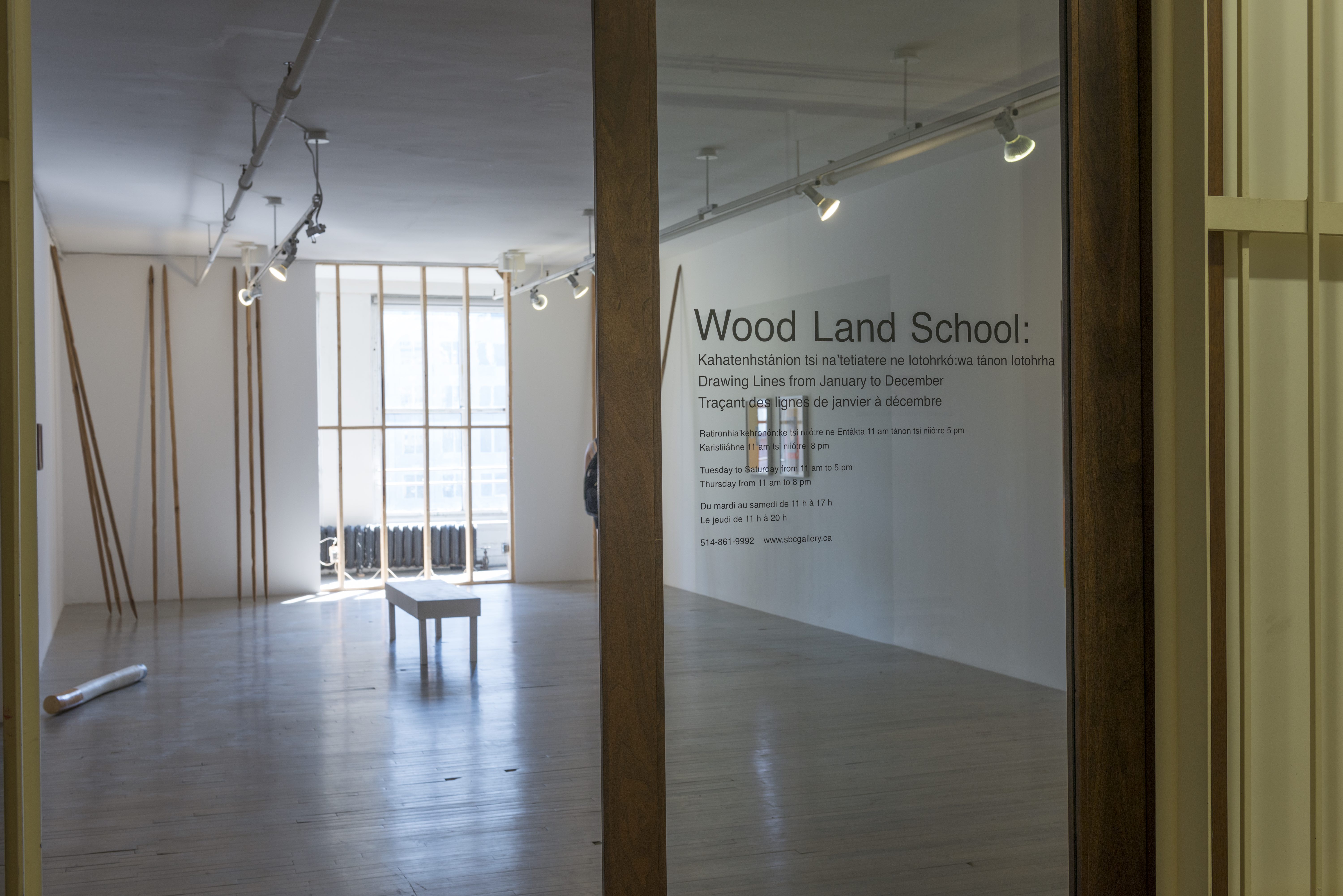While Canada celebrates its 150th anniversary of occupation on Turtle Island, and Montreal its 375th, Wood Land School takes over the SBC Gallery of Contemporary Art with its exhibition “Kahatenhstánion tsi na’tetiatere ne Iotohrkó:wa tánon Iotohrha /Drawing Lines from January to December” (2017). The exhibition, organized by Duane Linklater, Tanya Lukin Linklater, and cheyanne turions, with Walter Scott, is structured into four “gestures,” or periods of time during which different works enter or leave the space. The gallery itself is quietly perched on the fifth floor of a building in downtown Tiohtià:ke (also known as Montreal). Upon entering, the viewer becomes aware of the space around them as a gathering of Indigenous identity expressions. The exhibition puts forward paintings, written texts, and collages and other works that all address the issue of Indigenous memory, anti-colonial resistance, community-building, and Indigenous futurism.
Annie Pootoogook, artist at the center of Indigenous dialogues

The first piece that the visitor sees upon entering the exhibition space is an obituary to Annie Pootoogook, a prominent Inuk artist who passed away in 2016. The obituary was written by Heather Igloliorte in Inuktitut, and the English translation is only available on the exhibition’s website. This situates the work as primarily by, about, and for Indigenous artists and visitors. It regulates who has primary access to the language space, thus redefining and reclaiming it. Annie Pootoogook, “a hugely influential artist who forever changed the face of Inuit art,” according to Igloliorte, holds a central space in the exhibition. Her work Coleman Stove with Robin Hood Flour and Tenderflake is the only one to remain in the exhibition space over the course of all four gestures. Her drawing shows the ingredients and instruments required to make bannock, a simple bread, embodying the exhibit’s goal of showing specific expressions of Indigenous identity in detail. The ingredients in Pootoogook’s drawing have meaning and purpose only when positioned together; they are part of a recipe, though the dish itself is never shown. Much like these ingredients, the other works in the gallery also create meaning and purpose in the space throughout the different gestures. Pootoogook’s open-ended artwork is also an attempt to give agency to the spectators, by avoiding to give them patronizing instructions on how to read her piece or the exhibit as a whole.
Lines as vectors of history and memory

It is important to focus on the title of the exhibition to understand what it seeks to transmit. “Kahatenhstánion tsi na’tetiatere ne Iotohrkó:wa tánon Iotohrha / Drawing Lines from January to December” poses the question: “What is a line and what can its powers be?” The exhibition pamphlet speaks of “the power of line to mark history and invoke memory” and clearly states the artists’ mission to create “lines without beginning or end as a way to imagine Indigenous futurity.” For example, Charlene Vickers’ Diviners is composed of several long sharpened cedar spears positioned in small groups in the back corners of the exhibition space. The lines pass through one another and intersect. The cedar spears reference their historical uses in weaponry, hunting, and shelter-making, while being positioned in a contemporary context. Much like the exhibition which, through the unfolding gestures, becomes a line without start or end, the cedar spears call up past meanings to create new ones and legitimize their place as present and future cultural markers.
A decolonial project: reclaiming spaces, voicing resistance
The exhibition engages with colonialism and recognizes that it is ever present in its silencing and exclusion of Indigenous voices. This is especially relevant during this year’s anniversary celebrations, which fail to acknowledge that they only celebrate colonisation and genocide. In this context, “Kahatenhstánion tsi na’tetiatere ne Iotohrkó:wa tánon Iotohrha /Drawing Lines from January to December” can be seen as a disrupting force, taking up space in colonised ground and recreating exclusive space for the peoples dispossessed. When I thought about this context, Linklater’s “lines without beginning or end” took on a new meaning. They were ways for the artists to refuse categorization, to resist being restricted to the past, as the Canadian government seeks to define the country’s existence with start dates supposedly marking the end of Indigenous sovereignty.
There is a sense of reciprocity and communication in the project with non-Indigenous people. The exhibition pamphlet mentions the “tenants of treaty” as part of the project. The exhibition thereby seeks to educate and demand responsibility from settlers in the role they have in listening to Indigenous peoples and investing themselves when needed in the path to decolonization. Over the course of the four gestures, Wood Land School creates multiple occasions for dialogue by giving space to community initiatives such as talks or performances. They connect audiences and artists beyond the gallery’s walls, for them to join forces in the process of decolonization.

